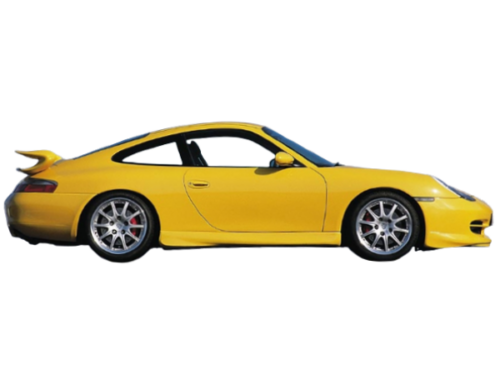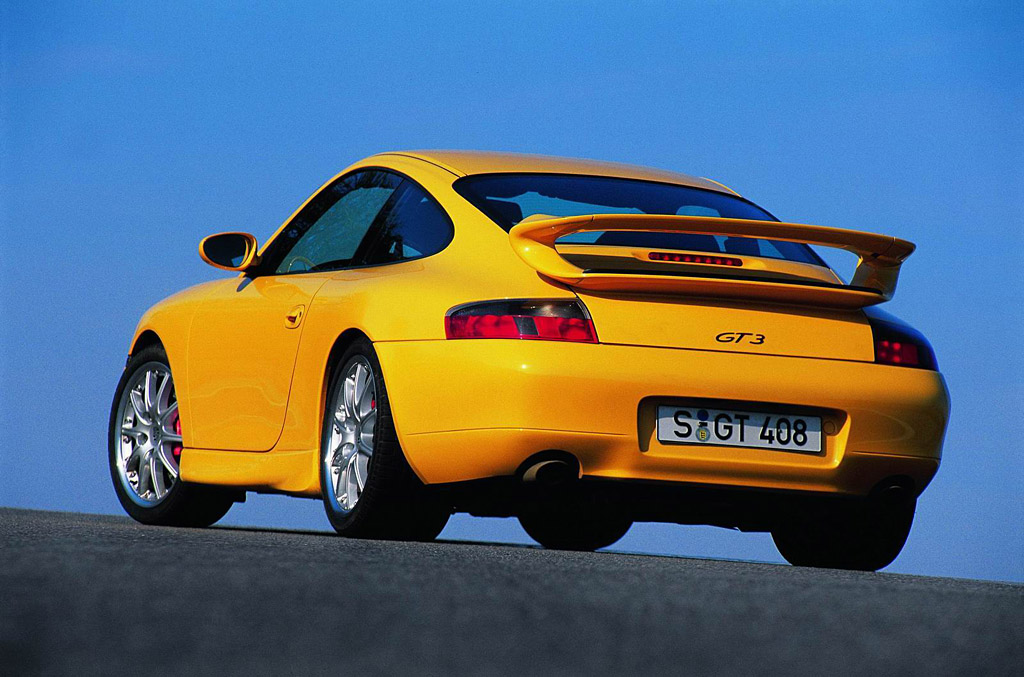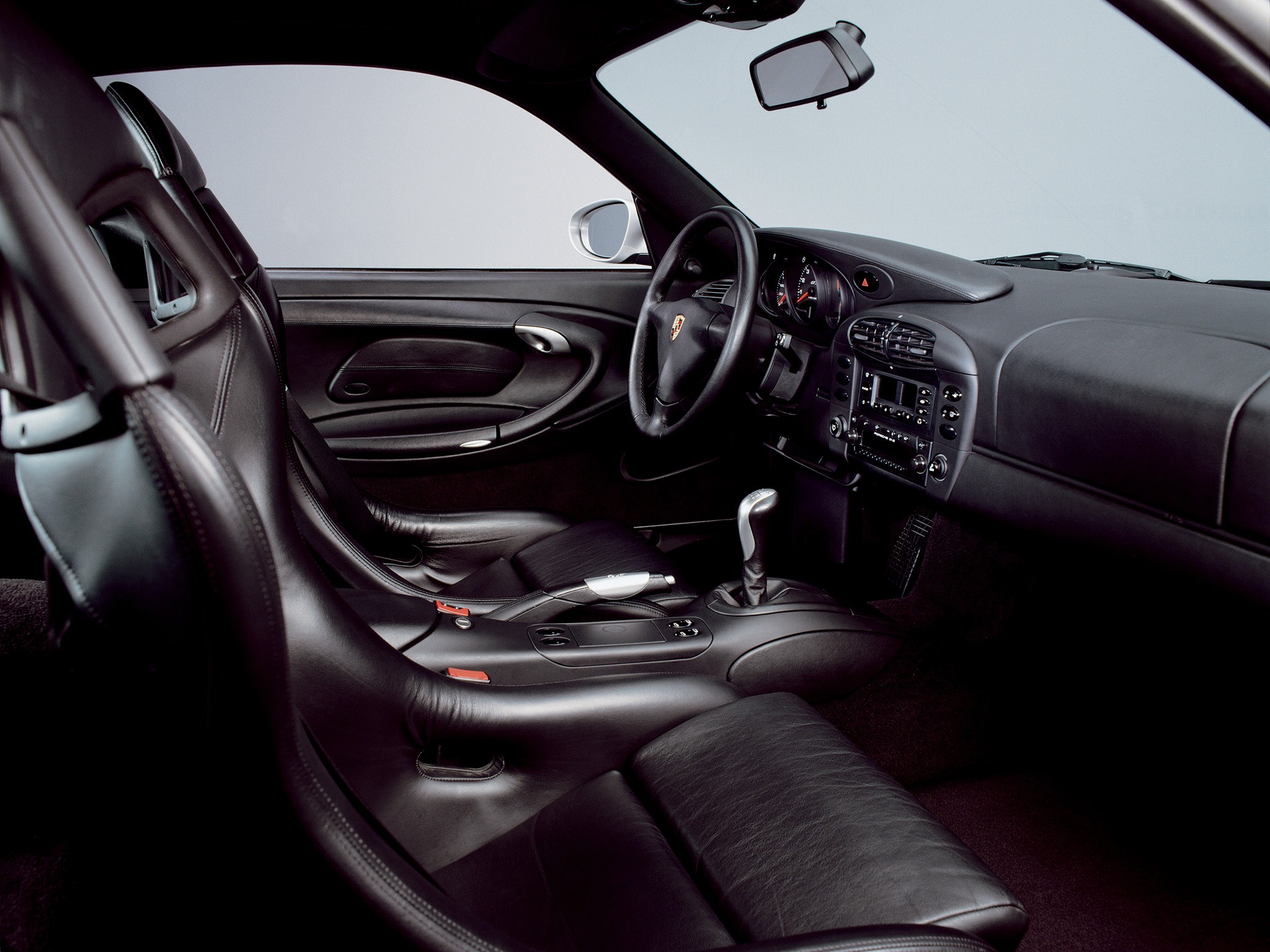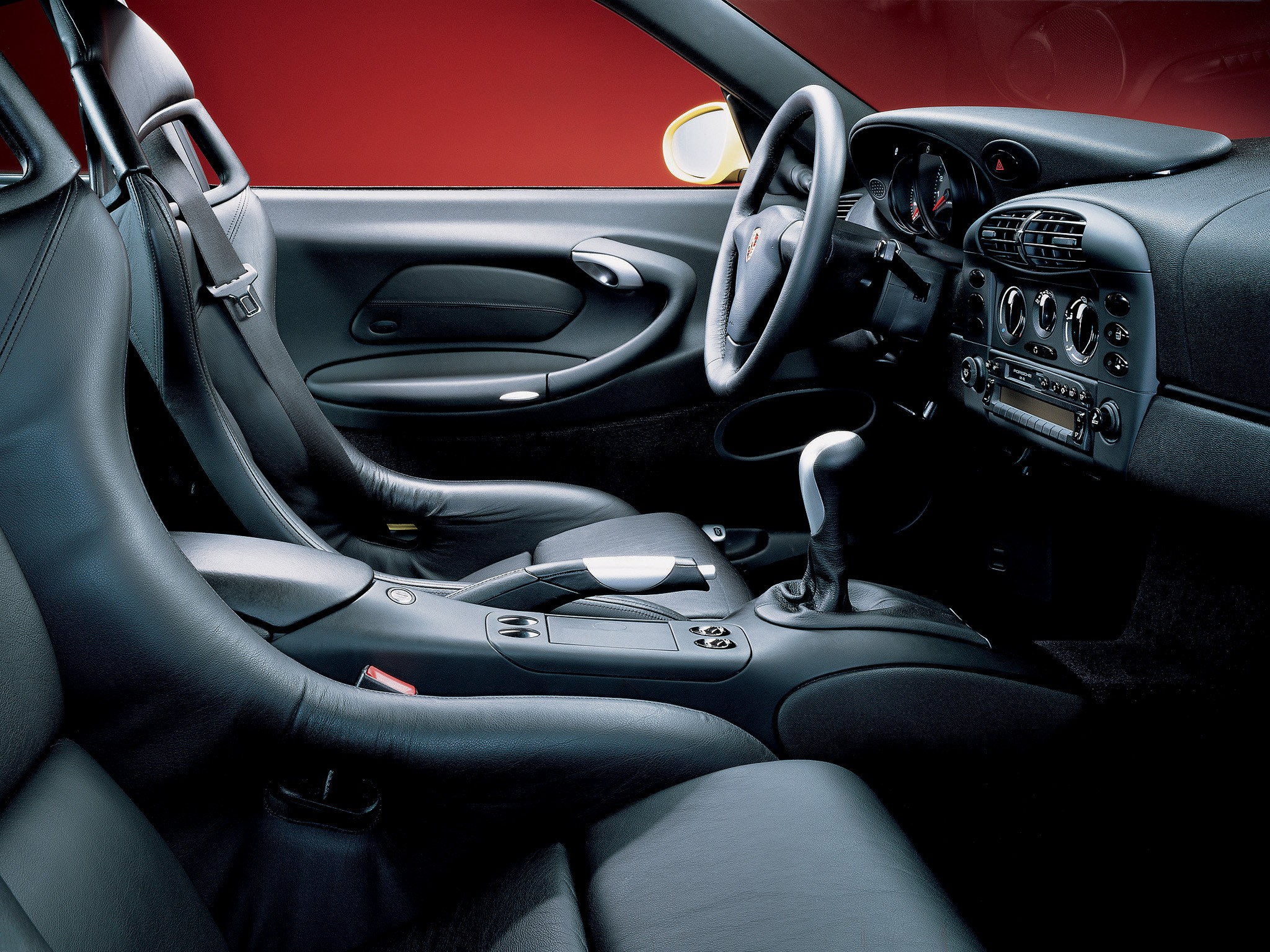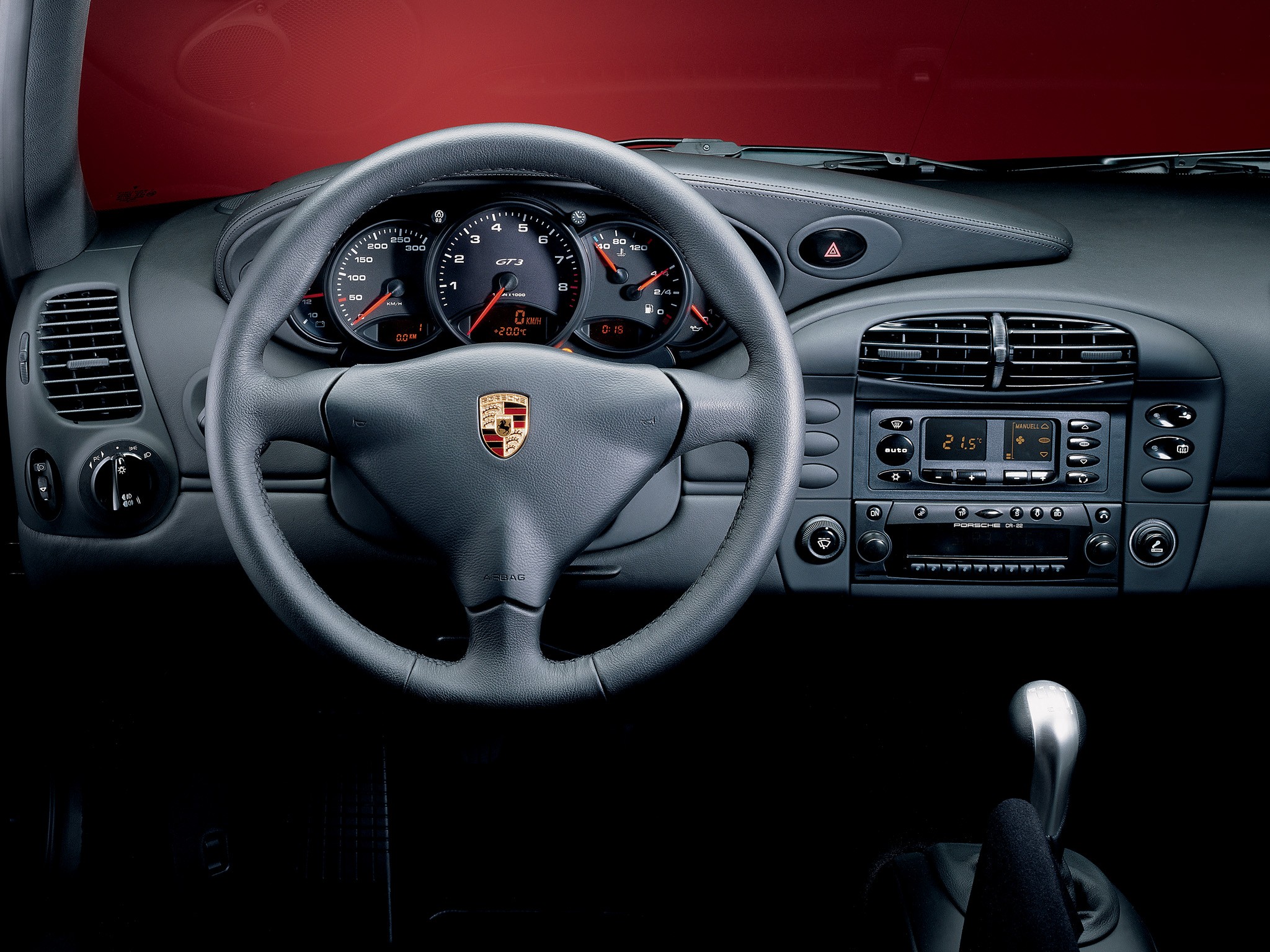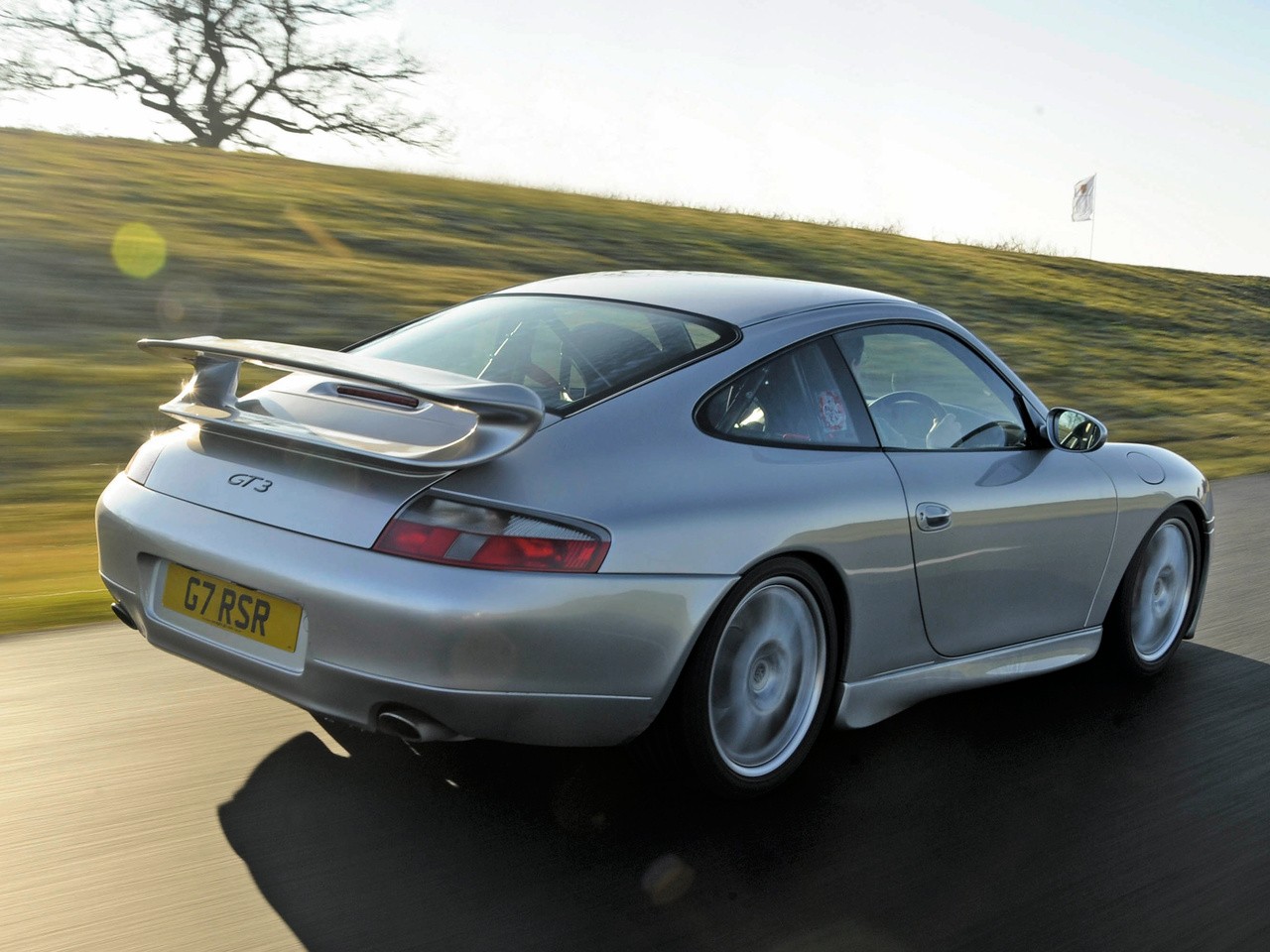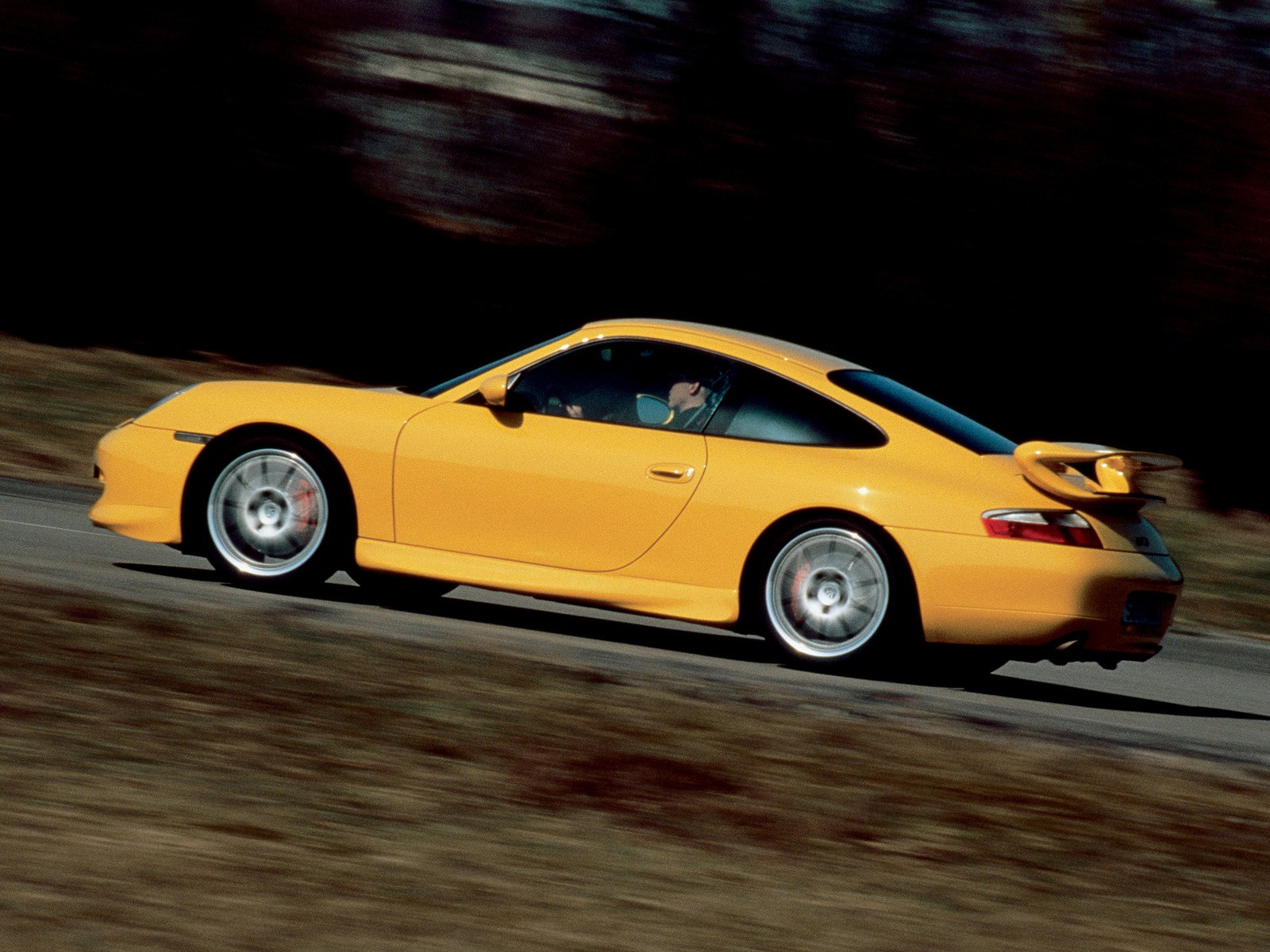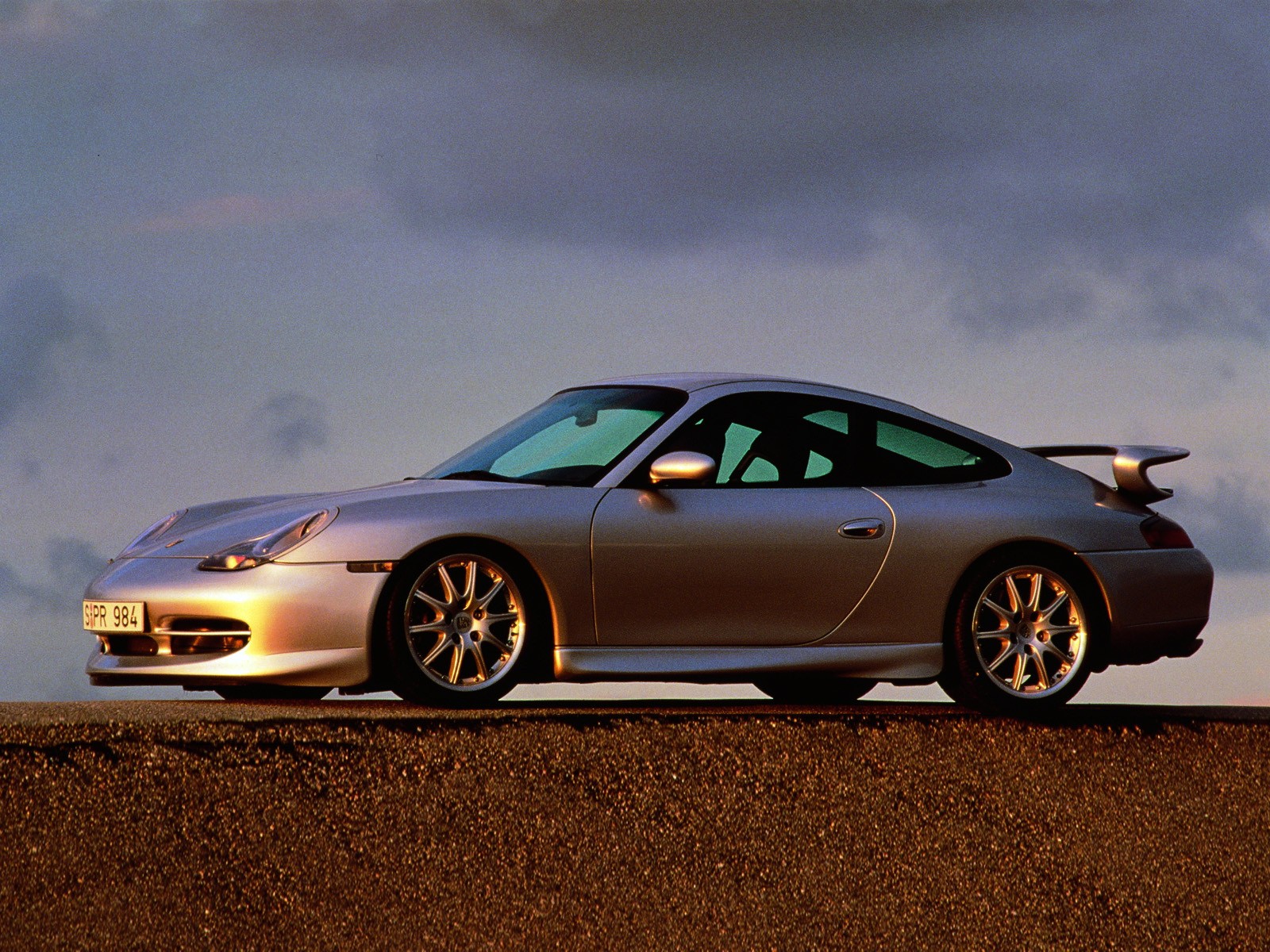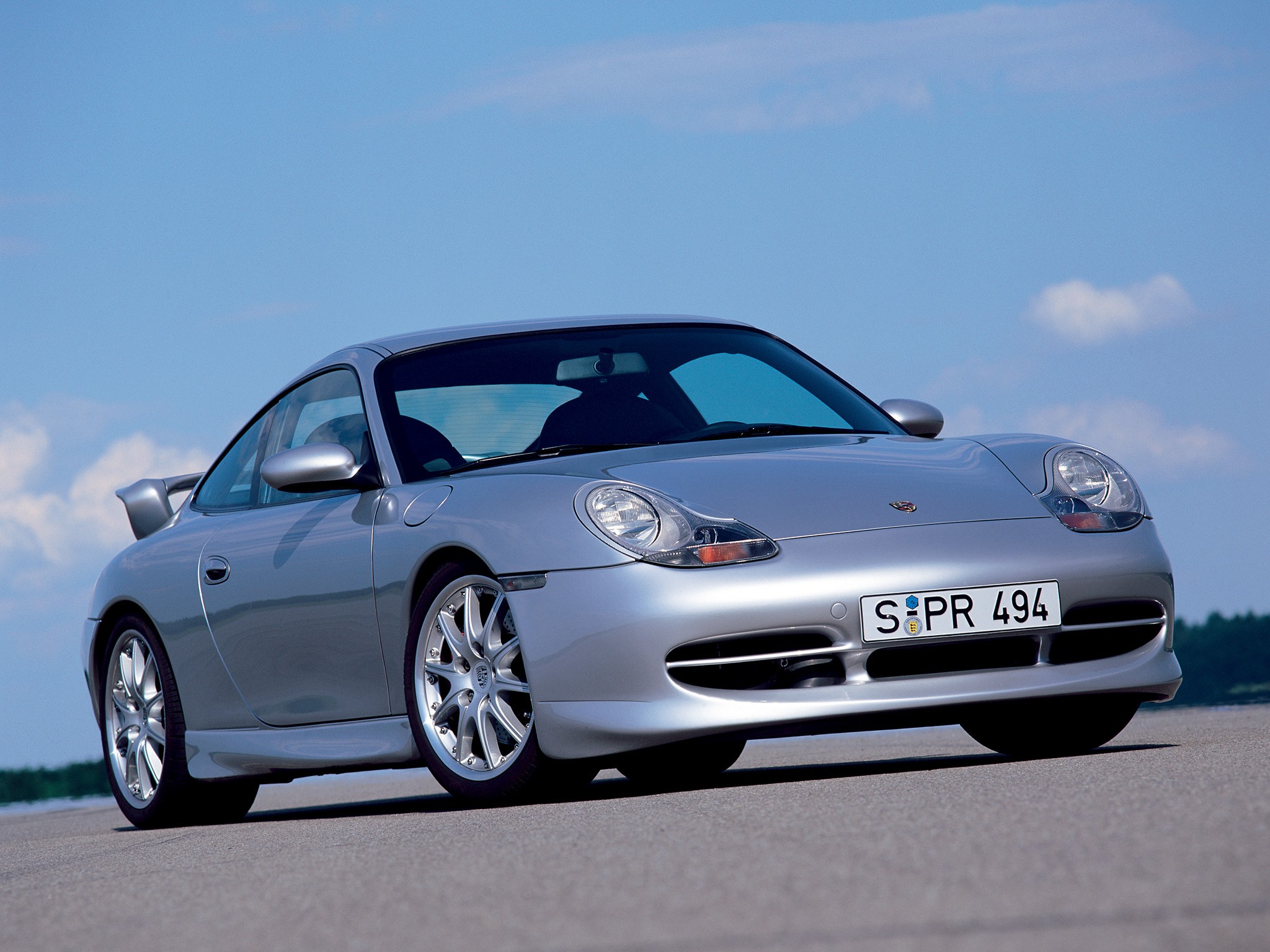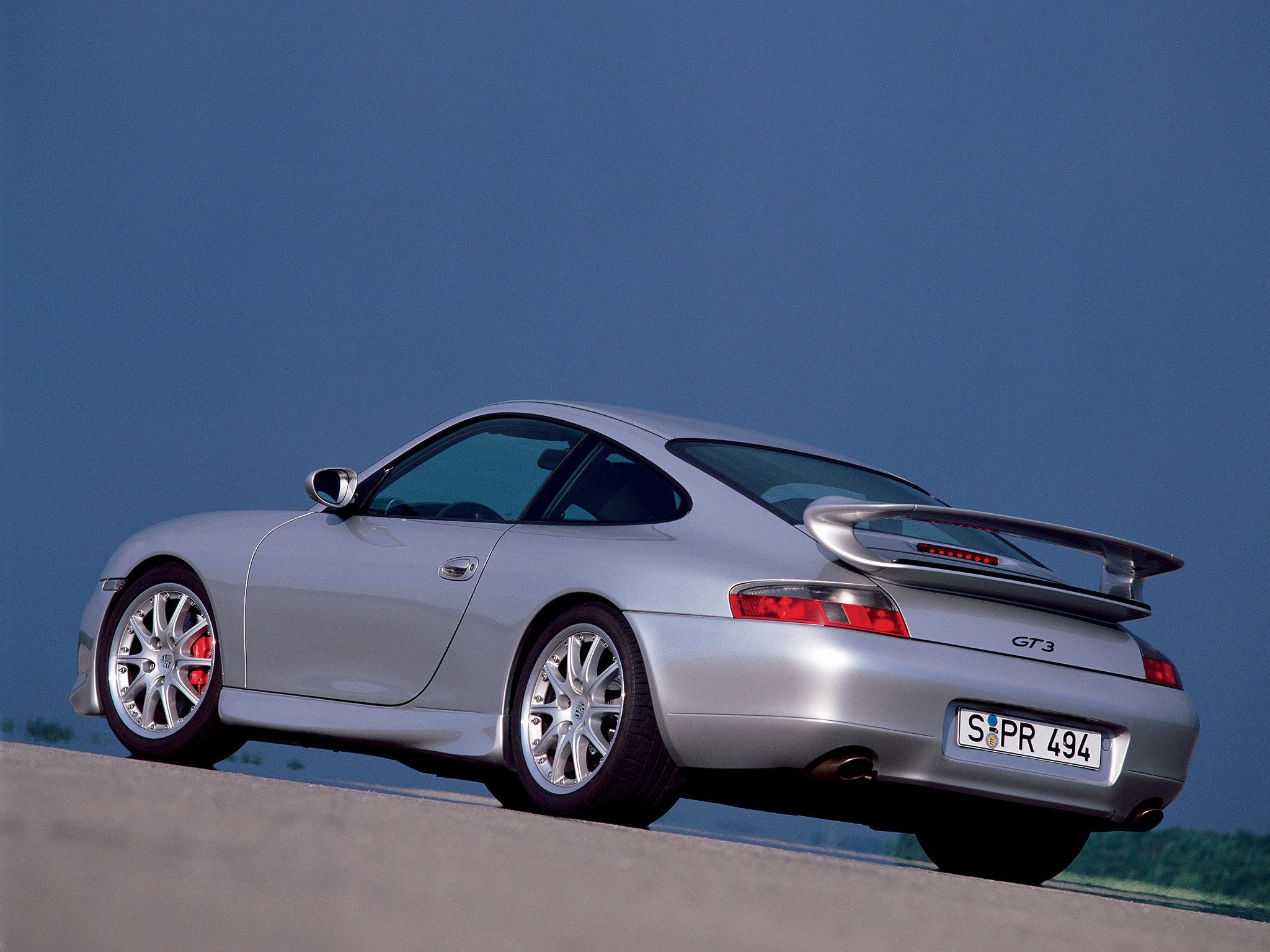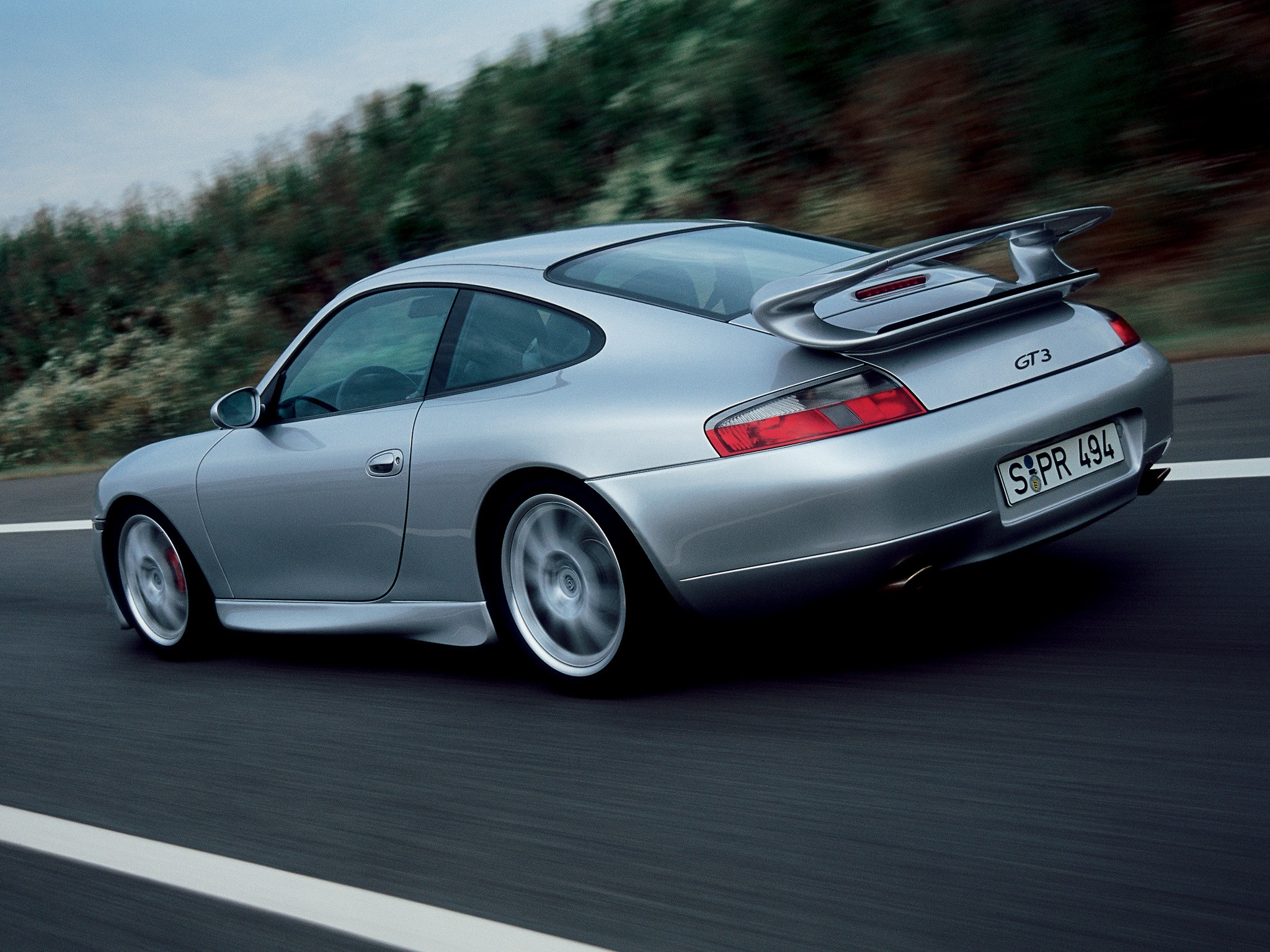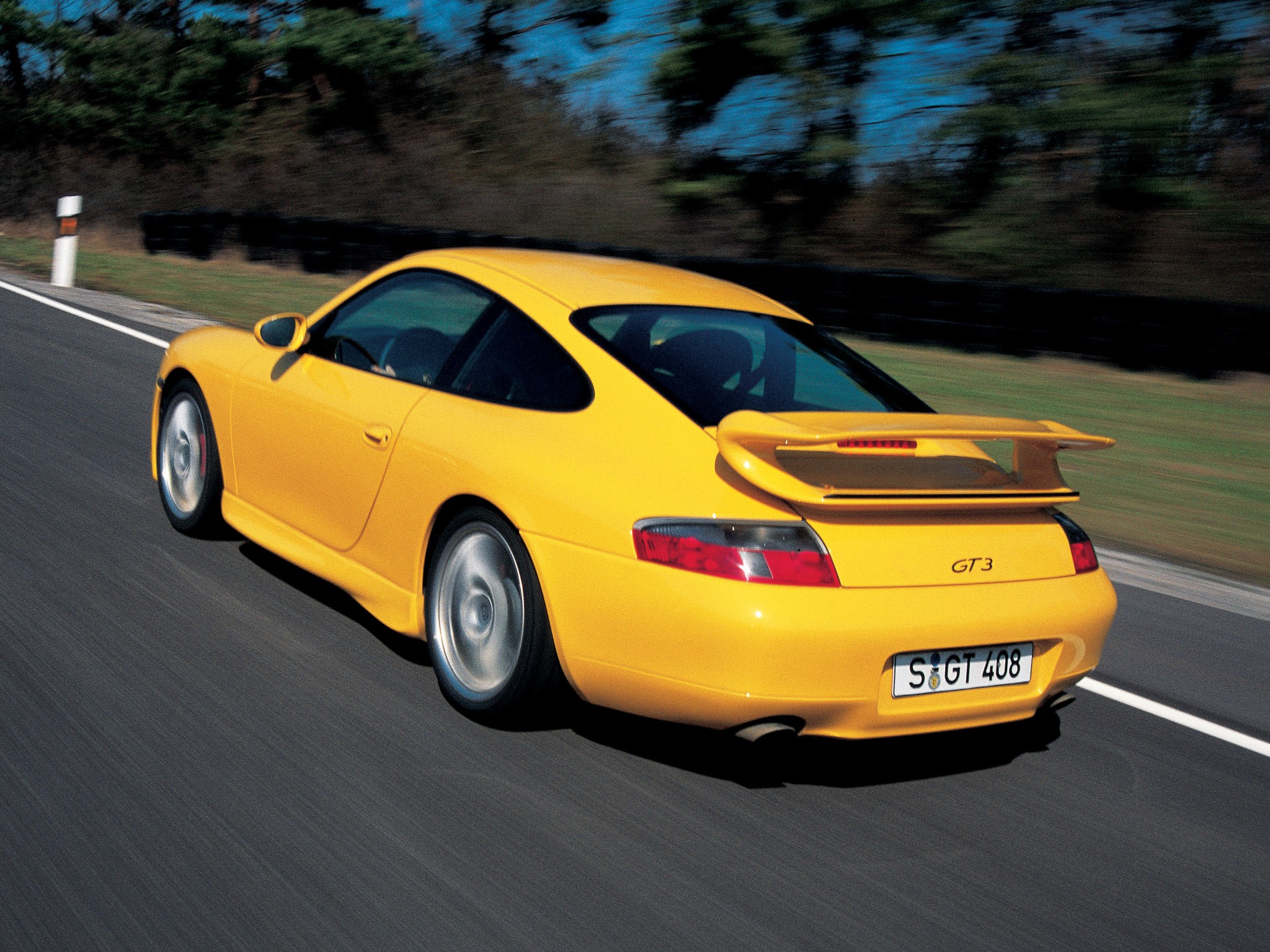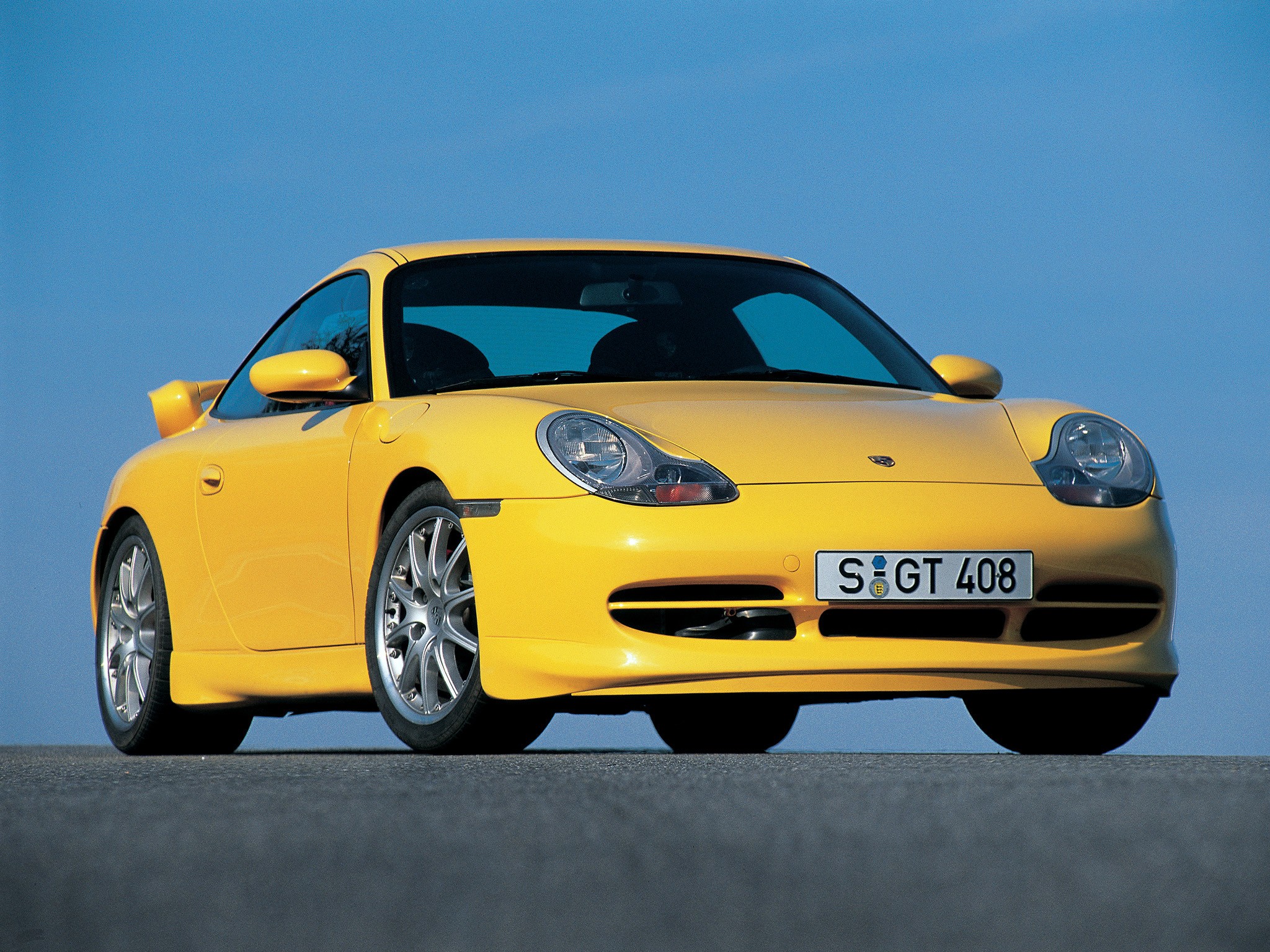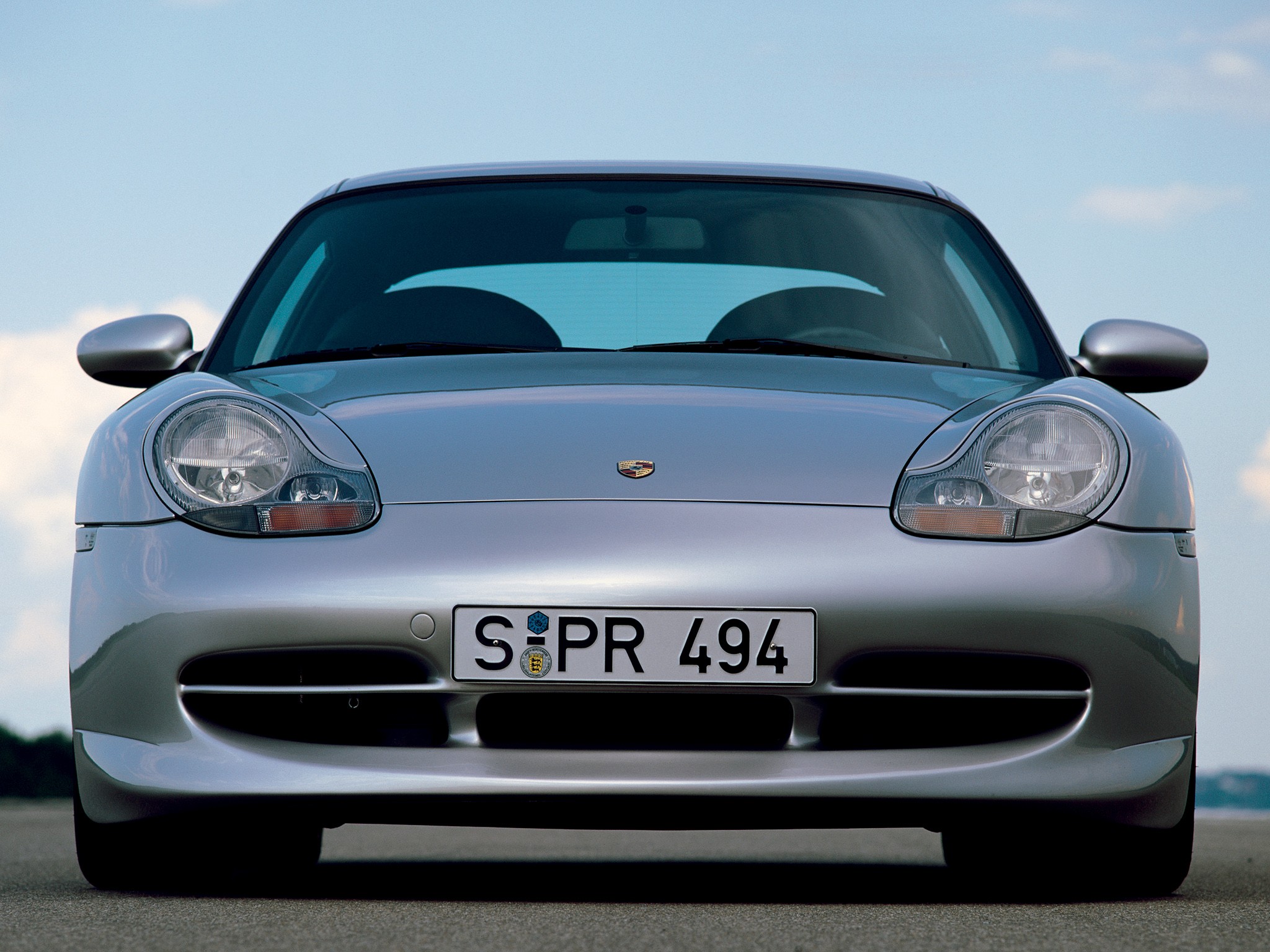(2000 – 2001) Porsche 911 GT3 (996) – Ultimate Guide
The GT3 was based on the standard 996 Carrera, but was stripped of a great deal of equipment for weight savings, featuring stiffer, adjustable suspension and upgraded brakes. The GT3 used the bodyshell of the four-wheel-drive Carrera 4, which incorporated additional front-end stiffening. It featured a naturally aspirated 3.6-litre flat-six engine generating a maximum power output of 360 bhp @ 7200 rpm and torque of 273 ft lbs @ 5000 rpm. This engine was shared with the 996 Turbo and was a derivative of the engine developed for the 911 GT1 race car. The Mk.II GT3 variant was based on the second generation of the 996, and featured updated aerodynamics, and a more powerful version of the 3.6 L engine from the MK.I, now rated at 381 bhp and 284 ft lbs of torque.
To comply with the FIA regulations regarding the homologation of an FIA GT3 car, Porsche had to build a street version of their race cars. And that is how the Porsche 996 GT3 appeared in the late ’90s. The 996 generation got the first “GT3” variant, a model that was seen as the next-step in the evolution of the Carrera RS timeline. Instead of being a homologation special, the GT3 arrived as a fully baked driver’s 911, incorporating lessons learned from motorsports but not allowing the track-only side to dominate the experience.
The car’s design was similar to the other 996 models, but with the wider body. It didn’t feature flared arches or big side intakes. It was a form that followed function at its best for the race version. It still had the 996 headlights, which were hated by all the Porsche fans. In the back, there was a slight difference between the 996.1 and the 996.2 versions. The latter featured a small duck-tail on the engine lid. It was considered to be useful in slower corners, but useless for tracks like LeMans, Sebring, but useful on the Laguna Seca.
The 996 GT3’s 3.6-liter Mezger flat-six is a watered-down variant of the six found in the incredible 911 GT1 Le Mans racer. It delivers 360 bhp @ 7200 rpm and torque of 273 ft lbs @ 5000 rpm, thanks to a nitride-hardened crankshaft, titanium connecting rods, and lightweight pistons. It was mated to a six-speed manual gearbox carried over from the racing department and not from the standard 996 range. It also got a limited-slip differential, which is handy considering the gearbox features quick-swap gear ratios to tailor your GT3 for a particular track.
The suspension is noticeably stiffer and lower than a regular Carrera’s, incorporating a reinforced structure, adjustable coil-overs, uprated front wheel bearings, beefier rod ends, and adjustable anti-roll bars. The brakes are bigger, fitted with six-pot calipers in the front and four-pot in the rear. That unique rear wing works with a unique front fascia and side skirts to reduce drag and give you additional downforce.
Porsche kept a lot of the usual parts on the shelf, too. The rear seats, spare tire, sound deadening, air conditioning, and sound system were all left behind on the factory floor; a 2,976-pound curb weight was increased by 66 pounds of additional reinforcement on the brakes, suspension, transmission, and body shell. In fact, the interior featured two bucket-seats, a dashboard, and a gearstick and that is about it. Behind the seats, there was a roll-cage instead of those rear seats. Sound deadening was non-existent and no other comfort features were installed on the stock version. But Porsche offered a CD-Radio and climate control for no extra cost on the options list.
The result of all of this hard work was a Nürburgring lap time of less than eight minutes, a zero-to-60-mph sprint in the 4.70 seconds, a top speed of 188 mph and a quarter mile in 12.5 seconds.
The bad news. The original GT3 was not available to buy in North America. The good news. There was a second version of the 996 GT3, known as the Mk II or 996.2 GT3 that was available to buy in North America. We have the ultimate guide on that model here.
Pictures
In Detail
| engine | Aluminum, Water Cooled, Flat-6 |
| position | Rear Longitudinal |
| aspiration | Natural |
| valvetrain | 4 Valves per Cyl w/VV& Variable Intake |
| displacement | 3600 cc / 219.7 in³ |
| bore | 100 mm / 3.94 in |
| stroke | 76.4 mm / 3.01 in |
| compression | 11.7:1 |
| power | 268.5 kw / 360.1 bhp @ 7200 rpm |
| specific output | 100.03 bhp per litre |
| bhp/weight | 266.74 bhp per tonne |
| torque | 370 nm / 272.9 ft lbs @ 5000 rpm |
| redline | 7800 |
| body / frame | Unit Steel |
| driven wheels | RWD |
| front tires | 225/40ZR-18 |
| rear tires | 285/30ZR-18 |
| front brakes | Cross Drilled & Inner Vented Discs w/4-Pot Calipers, ABS, Vacuum |
| front wheels | F 45.7 x 20.3 cm / 18.0 x 8.0 in |
| rear wheels | R 45.7 x 25.4 cm / 18.0 x 10.0 in |
| f suspension | McPherson Sruts w/Cylindrical Springs, Shock Absorbers |
| r suspension | Multi-Link w/Coil Springs, Coaxial Shock Absorbers |
| curb weight | 1350 kg / 2976 lbs |
| wheelbase | 2350 mm / 92.5 in |
| front track | 1475 mm / 58.1 in |
| rear track | 1495 mm / 58.9 in |
| length | 4430 mm / 174.4 in |
| width | 1765 mm / 69.5 in |
| height | 1270 mm / 50.0 in |
| transmission | 6-Speed Manual |
| gear ratios | 3.82:1, 2.15:1, 1.56:1, 1.21:1, 0.97:1, 0.82:1 |
| final drive | 3.44:1 |
| top speed | ~302 kph / 187.7 mph |
| 0 – 60 mph | ~4.7 seconds |
| 0 – 100 mph | ~10.1 seconds |
| drag | 0.30 Cd |



